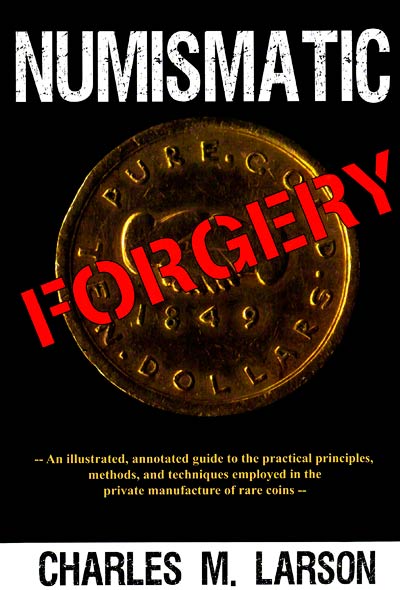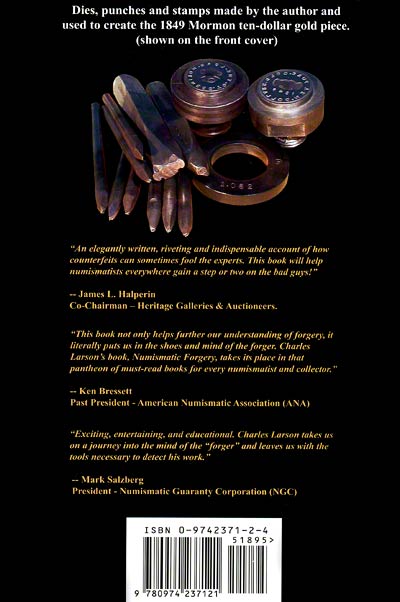| The Very Highest Quality Coin Book Reviews... |
| Numismatic Book Reviews |
|
 Numismatic Forgery by Charles M. Larson Front Cover
|
 Numismatic Forgery by Charles M. Larson Back Cover |
Full review coming soon. (But don't hold your breath).
In general, this is a useful book, which most dealers, along with serious collectors and investors, should read.
It does have a few annoying features however.
Firstly, it is written in American rather than English, so contains words like "gotten".
Some of the descriptions are almost impossible to follow, and one or two appear to be complete gobbledygook.
Forgery or Counterfeit
aThe author appears to assume that all his readers understand that a forgery means an imitation of a numismatic coin, and that counterfeit means an imitation intended to pass at face value into circulation. These definitions are by no means universally accepted and understood.
Page 168
Contains the following statement:
"When a dealer purchases a forgery thinking it's an authentic coin, he'll sooner or later end up selling it as an authentic coin."Objection
Planchets and Blanks
The author uses the American word planchet instead of blank, he does however give his definition of planchet in the glossary section of his book.
Charles Larson does stress that although his book is presented as a "how to" guide to forgery, it was written and published to alert collectors, investors and dealers to how it is or could be done, and not for use by criminals.
We can't resist the comment that to do so would be "Larsony"?
Do you have any comments about our book reviews?
| ...at the Lowest Possible Price |
|
32 - 36 Harrowside, Blackpool, Lancashire, FY4 1RJ, England. Telephone (44) - (0) 1253 - 343081 ; Fax 408058; E-mail: The URL for our main page is: https://24carat.co.uk | Chard(1964) Ltd |